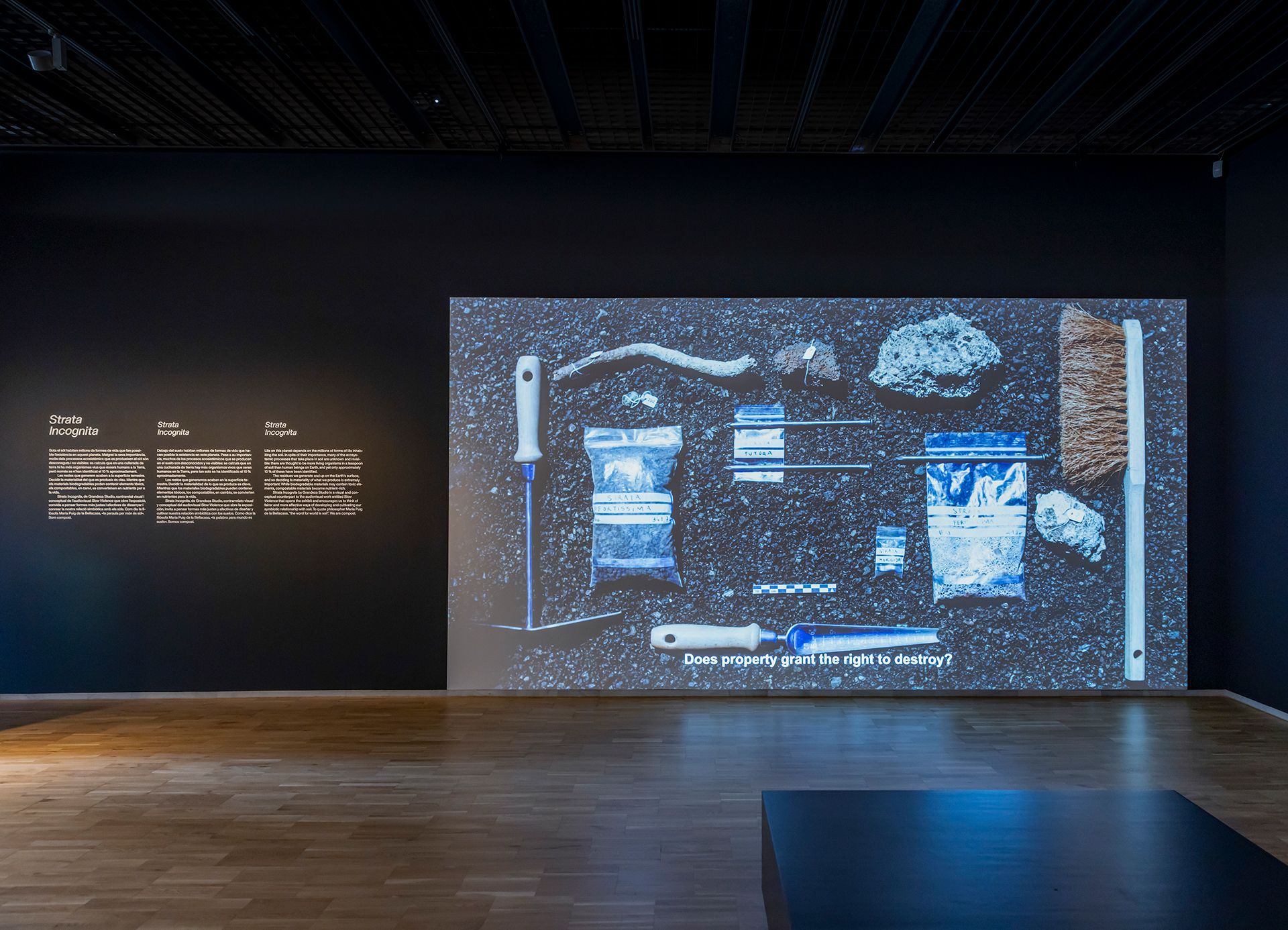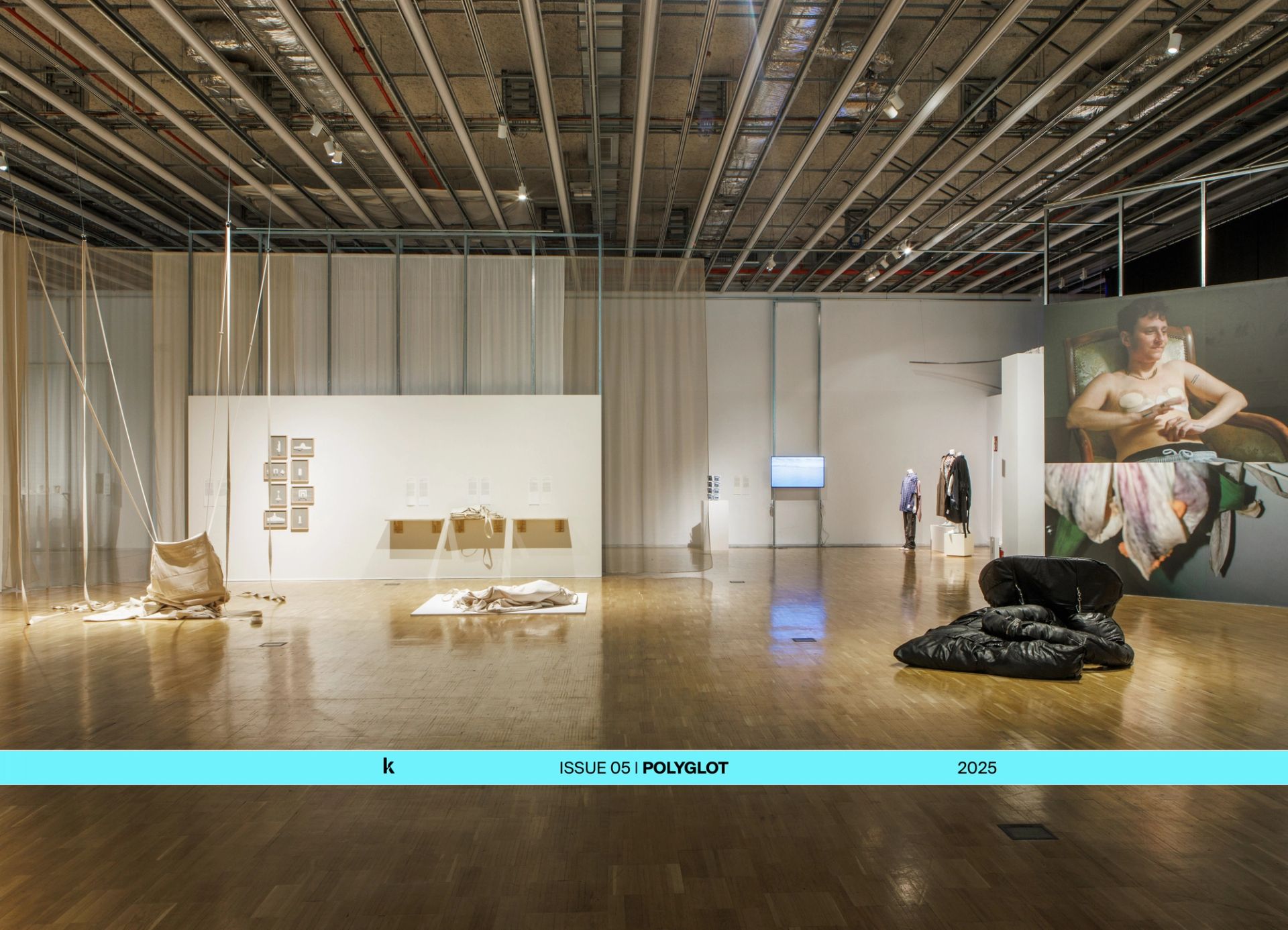The seventh edition of the Tallinn Architecture Biennale — organised by the Estonian Centre for Architecture — is curated by Ukrainian architect Anhelina L. Starkova, under the 2024 title ‘Resources for a Future’. In this interview, Starkova shares her holistic view of architectural production beyond the formal, including and intertwining various creative, imaginative and material practices.
FEDERICA ZAMBELETTI / KOOZ I would like to start with the title of the Biennale, Resources for a Future. What does the future look like from the perspective of TAB 2024?
ANHELINA L. STARKOVAInitially, we would attempt to develop an attitude, at the Tallinn Architecture Biennale, to regard the future in a non-formalistic way. While the core expectations of contemporaneity are undefined, ours is a retrospective approach where the attempt is to further speculative ideas of ‘the future’. We are interested in a much broader understanding of architecture: one that does not aim to propose a finite image of the future, whether at an urban scale or that of a building. Through the lens of the Tallinn Architecture Biennale, we consider future buildings as materially dynamic and conceptually constructive, with a high sensitivity in terms of contextual intelligence.
For many architects, the idea of the commons goes beyond the long-standing argument that construction is initiated solely by the dynamics of regional economies. We wanted to look at the other aspects of convening life — at resources that are more dynamic and influential than the given economic resources to which we have been over-attached. In that sense, we would hope to open the doors to new intellectual materialities — made possible thanks to digital complexity — thatallow us to assess the contradictions between diverse global and local situations, in ways that prove to be generative and positive.
Through the lens of the Tallinn Architecture Biennale, we consider future buildings as materially dynamic and conceptually constructive, with a high sensitivity in terms of contextual intelligence.
KOOZ Anhelina, you are living and working in Ukraine, a country that is experiencing the brutally honest reality of war. What does this Biennale mean for you? How has your experience of the destructive power of war redefined your relationship to architecture and the role of the architect?
ALS Not really… Well, as I hold Ukrainian citizenship, for many years I have tested professional nomadism, which has been a rather intense professional experience, imbricating myself between various spheres of architectural practice and dialogue across the USA, Russia, Switzerland, Ukraine, and now Estonia. In each of these places, the intrinsic heritage and ways of building are different if not entirely in contrast. Mostly, it has been a process of architectural diplomacy to observe and learn from the unknown or ‘other’. Eventually, I believe this exposure is an essential part of the profession.
Before the ongoing invasion, I was involved in large cultural developments initiated in Ukraine; upon the outbreak of war everything was disrupted. I was blockaded without the chance to leave for weeks, while the city was under constant air attacks. I believe this was the moment when I instinctively felt as though its architecture was a continuation of my body — will it be saved or will it be killed? The importance of the added-value or symbolic identities somehow disappeared. I even wrote an article — entitled ‘Stoned Blindness’ — for the Swedish publication The Paletten about this. Indeed, we build with blindness as an inevitable reaction to global commercialism and I lost all interest in that. We now know that technological and industrial components didn't revolutionise architecture, formally nor ideologically. This is perhaps because architecture has always held a certain dimension of stability — so this is what we wanted to test and challenge during the biennale. This is the whole question of the biennale: (how) can architecture bring stability without the parasitic and destructive effects of urban policy?
This is the whole question of the biennale: (how) can architecture bring stability without the parasitic and destructive effects of urban policy?
KOOZ Resources for a Future is divided into three thematic sections. Could you expand on these and how they explore architecture as a resource?
ALS Explicitly, we presented three resources — materials, constructive concepts, and creative intelligence in the unfolding process. I wanted the exhibition to feel diverse rather than consistent, in parallel with the urban scale today. When I invited people to contribute to the theme of resources, I explored each proposal stemming from its intellectual origins — underlining the sense that architecture is a product of infinitely varied intelligence, and this intrinsically influences the production of materials and building ideas. I don’t think architecture is something to be considered separately from that which produces it. This was my main argument. In this way, it’s not only the architectural outcome or the architect that is explored; instead, it’s a much more manifold and substantial story.
KOOZ The main objective of the exhibition is to reimagine the utility of local resources beyond aesthetics, to serve not only a privileged minority but everyone. What does the exhibition define as local? What kinds of knowledge can local resources build upon?
ALS Local resources can be strengthened through technological accessibility. Eventually, all architecture is local: we build it in different ways following a global economic lens, following one or another urban trajectory. More interesting questions include whether the idea of green sustainability can formally challenge architecture and urbanism? Is it true that digital knowledge exchange can invest in the status of local today? How can we reconstruct and replenish the lost or obsolete; what are regenerative approaches architecture can propose to us? All these questions revolve about local potential.
KOOZ Beyond the exhibition, TAB also features an installation programme where participants were, through an international competition, invited to create a public infrastructure that reuses local materials to create a community space. How did the winning entry respond to the brief?
ALS While judging entries, we looked out for the use of accessible materials, cultural tolerance, climate control, and site specific tectonics. Architectonically and even typologically, the majority of proposals were similar— post & beam constructions with various materials applied. By contrast, the winning team proposed a wall-like system composed of public enclosures, referring to the ancient Egyptian technology of gabions. Their entry proposed many formal possibilities, flexible enough to adapt to varied local situations. We wanted to test local social and material resources as well as local building capacity through this project. Therefore, we selected the entry which programmatically matched the values of TAB24.
KOOZ The Biennale will run from 9 October until 1 December 2024,in the Estonian city of Tallinn. What traces are you seeking to leave behind?
ALS Optimism! The Biennale demonstrates and celebrates a fascinating map of resources. Sometimes these are hidden or unseen — but potentially, these are the main drivers of an architecture to come. Curating this exhibition has revealed an astonishingly rich world of resilience and intelligent practice, one that we all too often ignore. In fact, we are only starting to delve into the meaning and possibilities of architecture. Rather than seeking to leave traces behind, we wish to open up horizons in front of all of us and for the scope of Estonian architecture.
Bio
Anhelina L. Starkova is an architect and curator, an expert in the state of architecture for field application in large-scale designs. She is a curator of the 7th Tallinn Architecture Biennale 2024. Anhelina has been an invited lecturer at The University of Applied Sciences at Grisons FHGR and the Kharkiv School of Architecture KHSA. Her teaching and research interests span new formal methods in architectural design, spatial perception, and analysis through the contemporary theory of architecture; she is a frequent collaborator with various world-renowned architects and public authorities.
Federica Zambeletti is the founder and managing director of KoozArch. She is an architect, researcher and storyteller whose interests lie at the intersection between art, architecture and regenerative practices. In 2022 Federica founded KoozArch with the ambition of creating a space where to research, explore and discuss architecture beyond the limits of its built form. Prior to dedicating her full attention to KoozArch, Federica collaborated with the architecture studio and non-profit agency for change UNA/UNLESS working on numerous cultural projects and the research of "Antarctic Resolution". Federica is an Architectural Association School of Architecture in London alumni.





